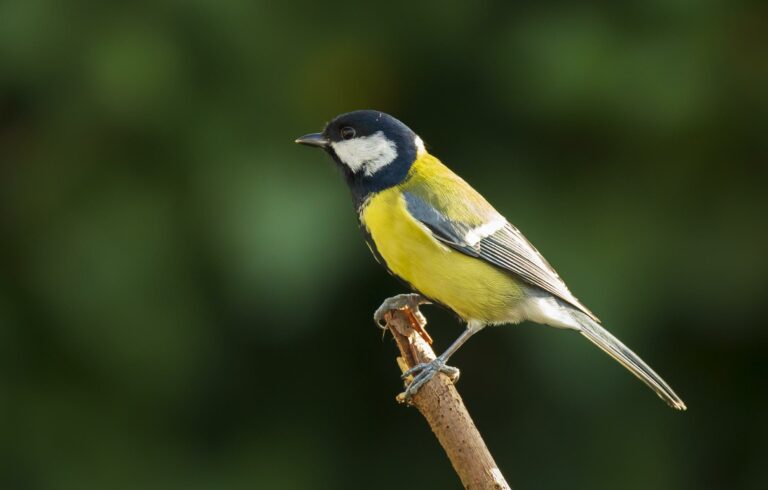Parus major

The great tit is a resident bird and can be observed throughout the year in Germany. It inhabits gardens, parks, and forests and can reach a body length of up to 14 cm. The back feathers are greenish in color, the lower body is yellow and has a black longitudinal band. The head is predominantly black, with white cheeks (Schaefer 2018). The great tit is a cavity nester, and the breeding season begins in spring, with an average of 9 eggs laid per clutch. The average incubation period is 14 days, and the nestling period is approximately 19 days (Winkel 1970).
Diet: Great tits feed on insects and their larvae, such as butterflies or flies, as well as spiders and worms. They also consume plant materials such as seeds and fruits (Cowie and Hinsley 1988).
Threat status: Parus major is classified as “least concern” according to the IUCN Red List for endangered species and the Red List of Germany.
-
Cowie, R & Hinsley, S. (1988)Feeding Ecology of Great Tits (Parus major) and Blue Tits (Parus caeruleus), Breeding in Suburban Gardens. In: J. Anim. Ecol. 57 (2), S. 611.
-
Schaefer, M (2018)Brohmer – Fauna von Deutschland. Ein Bestimmungsbuch unserer heimischen Tierwelt: Quelle & Meyer Verlag GmbH & Co.
-
Winkel, W (1970)Experimentelle Untersuchungen zur Brutbiologie von Kohl- und Blaumeise (Parus major und P. caeruleus). In: J. Ornithol. 111 (2), S. 154–174.